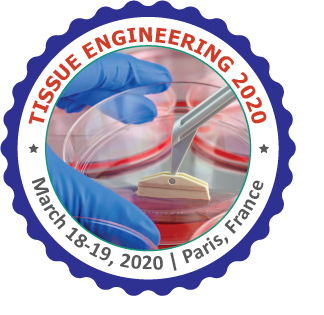
Khalil El Mabrouk
Euromed University of Fes, Eco- Campus, Morocco
Title: 3D printing of metallic framework coated with a bioglass matrix for implant applications
Biography
Biography: Khalil El Mabrouk
Abstract
In a new approach combining Additive Manufacturing with Bioceramics, a metallic 3D porous structure coated with bioactive glass was produced for possible use in orthopedic implants. This approach aims to combine high mechanical properties of the metallic structure (stress shielding) with enhanced biological activity. 316L stainless steel (316L-SS) lattice structures, based on rhombic dodecahedron unit cell with a relative density of 20%, were designed and fabricated using Selective Laser Melting (SLM). Despite its good mechanical properties, 316L-SS (as many other metals) lacks the biofunctionality required to achieve long-term implantation. To be successfully used as biomaterial, these porous 3D lattice structures were thus coated by 58S bioglass through a simple impregnation method. The use of a silica layer was evaluated as possible pretreatment to improve bioglass adhesion. The coated parts are then assessed by scanning electron microscopy (SEM) coupled with energy dispersive spectrometry (EDS) to qualify the coating. Porous sample parts pretreated with a silica layer presented a denser coating structure when compared with untreated porous metallic structures. In the following round of characterization, parts were immersed in a simulated body fluid to study their ability to grow new bone tissue. Results show the formation of a uniform apatite layer after seven days of immersion, showing the bioregeneration capability. This, combined with the lightweight framework structure provided by 316-SS, will increase the lifetime of this new generation of orthopedic implants.

